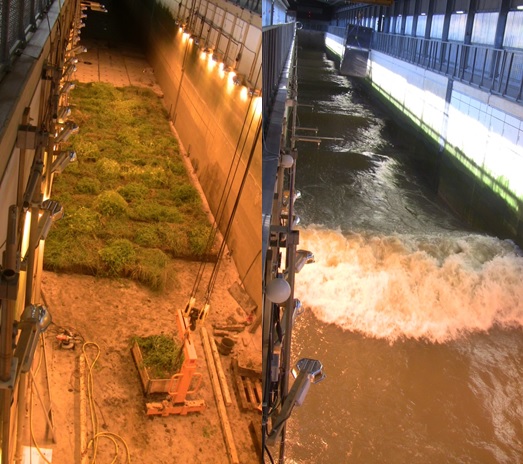Large-scale flume experiment shows that salt marshes reduce the height of waves during storm surge conditions by nearly 20%
The Cambridge Coastal Research Unit at the University of Cambridge, together with a team of researchers from Germany and the Netherlands, conducted the largest laboratory experiment ever to investigate how waves are dissipated by coastal salt marshes during storms. For the experiment, 200 m2 of salt marsh from the Northern German Wadden Sea were transported by lorry to the large wave flume (Grosser Wellenkanal or GWK) in Hannover, Germany.

Tests carried out under two meters water depth above the marsh surface, proved that, over a distance of 40 meters, a salt marsh reduces the height of large waves in deep water by 18%, making them an effective tool for reducing the risk of coastal erosion and flooding. By repeating experiments across a mowed saltmarsh, the team was also able to prove that sixty percent of this reduction is due to the presence of marsh plants alone. The results are published in the journal Nature Geoscience.
The increasing frequency and severity of storms is a likely consequence of climate change. Together with sea level rise, the effects of such storms could be devastating, putting coastal communities worldwide at risk. While the important role of saltmarshes in protecting against coastal erosion is well-known, their effectiveness in mitigating the effects of extreme weather, when water levels are at their maximum and waves are at their highest, had not been understood or definitively quantified. The experiment also showed that, even when the waves flattened and broke the marsh’s vegetation, the soil surface beneath remained stable and resistant to surface erosion.
Further reading:
